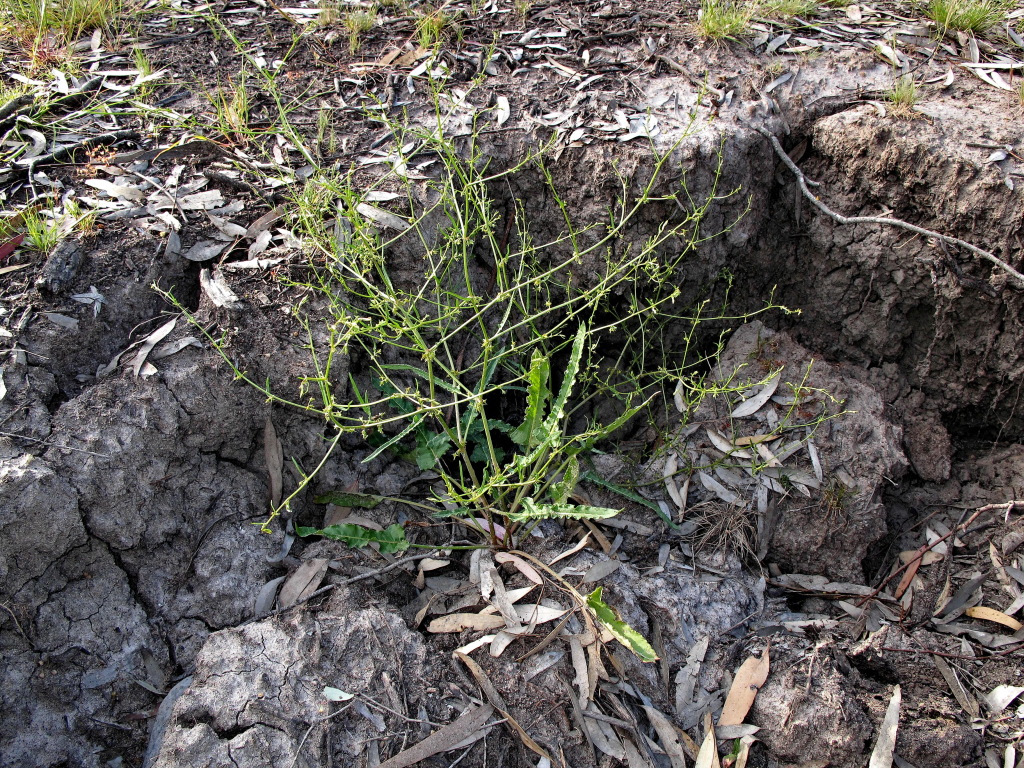Rumex brownii
Campd. Slender DockPerennial with a more or less erect, few-branched axis to c. 1 m high, normally leafless in the upper c. two-thirds. Petioles of basal leaves usually longer than lamina; lamina oblong to narrowly ovate, 5–20 cm long, 1–6 cm wide, sometimes constricted above the broadly cuneate to cordate base; margins weakly to strongly crisped. Inflorescence to c. 70 cm high, 20 cm wide; flower 'whorls' mostly 1–5 cm apart, 5–8(–16)-flowered, not subtended by a leaf. Fruiting valves c. triangular, 2.5–4 mm long, 1.5–3 mm wide (excluding teeth), prominently reticulate, with 3–5 strongly hooked teeth along each side, apex of each valve also hooked; callosities normally absent (but hybrids often with callosities); fruiting pedicel subequal to valves, jointed near base. Nut 1.5–2.5 mm long. Flowers mainly Sep.–Jan.
LoM, MuM, Wim, GleP, Brid, VVP, VRiv, MSB, RobP, MuF, GipP, OtP, WaP, Gold, CVU, GGr, DunT, NIS, EGL, EGU, WPro, HSF, HNF, OtR, Strz, MonT, HFE, VAlp. All States except NT. New Zealand, Timor, New Guinea, Java, a rare weed in Europe, the seeds probably accidentally introduced with wool from Australia. Except for dry and sandy areas of the further north-west, widespread and common along watercourses, in depressions and other water-retentive soils almost throughout the State.
Hybrids with Rumex tenax usually have a more divaricately branched inflorescence, and fruiting valves with prominent callosities as in that species.
Walsh, N.G. (1996). Polygonaceae. In: Walsh, N.G.; Entwisle, T.J., Flora of Victoria Vol. 3, Dicotyledons Winteraceae to Myrtaceae, pp. 272–295. Inkata Press, Melbourne.
 Spinning
Spinning



